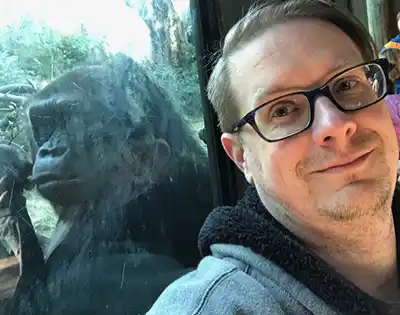Modern Human Movement

This fall, we welcomed Steven Lautzenheiser, who received his PhD from the University of Washington in 2019, as a lecturer in biological anthropology. In addition to teaching the introductory course in biological anthropology, Lautzenheiser is also teaching undergraduate and graduate courses on evolutionary biology, primates and primate evolution, and human paleontology.
Lautzenheiser’s research combines anthropological and engineering theories and mathematical modeling in order to understand how modern humans came to move the way that we do. Bipedalism, or walking upright, is a central part of our evolutionary story. The fossil record of the extinct members of the human lineage preserves evidence of alterations in the structure of the foot, suggesting that how our ancestors moved across the landscape changed over time. Understanding these differences requires careful study of the relationship between how the foot interacts with the ground and the size and shape of the bones that enable that interaction. Lautzenheiser measured the ground reaction forces on the feet of volunteers in the laboratory as they walked in a straight line and as they changed direction while walking, and then modeled how these forces contributed to the shape of the talus (ankle bone). He found that not only does changing direction affect the ground reaction force applied to the foot, but that the orientation of the foot affects how these forces pass through it. By increasing our understanding the biomechanics of the foot and ankle of modern humans, his research helps us to understand the fossil record better.